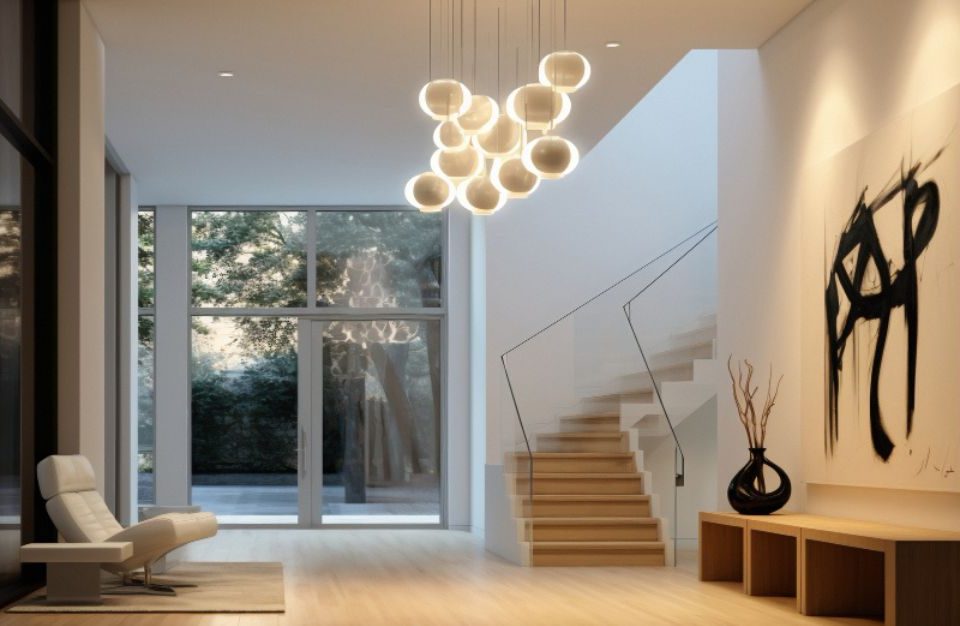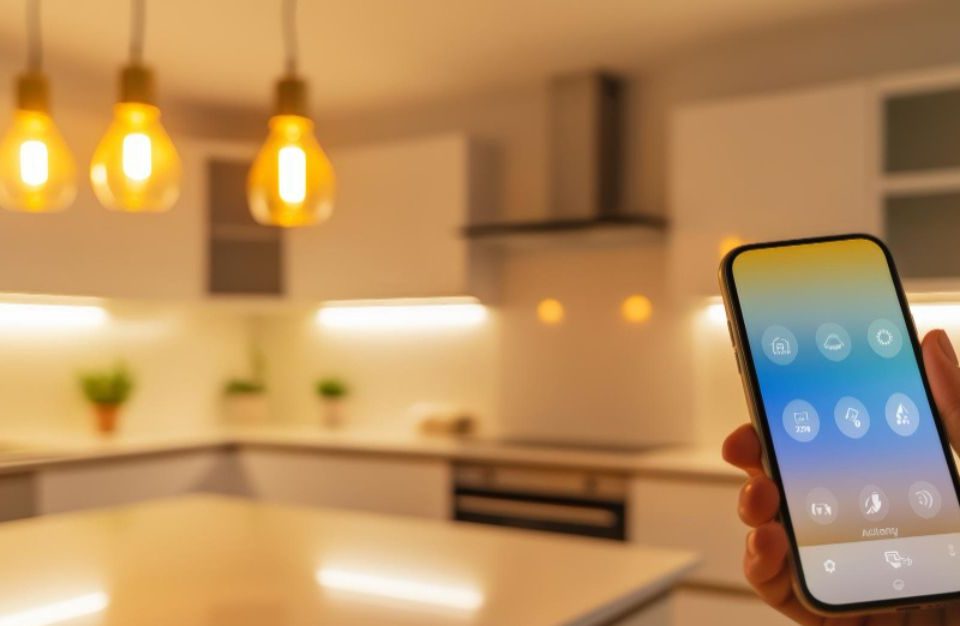
Layered Lighting Designs for a Sophisticated Residential Interior
June 18, 2025
Elevate Your Store with Strategic Retail Lighting Design
June 26, 2025Lighting has a powerful impact on how your home looks and feels, influencing everything from mood and comfort to functionality and energy use.
In many Malaysian homes, small oversights in lighting design can lead to discomfort, higher electricity bills, or underused spaces.
Before investing in new fixtures or switching bulbs, it’s important to recognise the early signs of poor lighting and understand how common lighting mistakes happen—so you can fix them with intention and clarity.
Key Takeaways
- Uneven brightness, eye strain, and high energy bills are clear signs your home lighting may need a rethink.
- Relying on one light source, using the wrong colour temperature, and poor fixture placement are frequent errors that affect comfort and functionality.
6 Common Signs Your Home Lighting Needs an Upgrade

Noticing discomfort or awkwardness in how your space feels could result from poor lighting.
| Sign | What It Means |
| Rooms feel too dim or overly bright | Lighting levels are not balanced for the space or purpose |
| Spaces appear dull, cold, or shadowy | Poor light distribution or incorrect light colour temperature |
| Frequent eye strain or discomfort | Inadequate lighting for reading, working, or screen use |
| Difficulty setting the right mood | Lack of dimmers or mismatched lighting tones |
| High electricity bills despite minimal use | Inefficient and outdated light fixtures or unnecessary overlighting |
| Task areas like kitchens or work desks are poorly lit | Absence of dedicated task lighting where it’s most needed |
10 Home Lighting Mistakes and How to Fix Them

Lighting mistakes may seem minor, but they can affect your home’s comfort, functionality, and electricity bills over time.
Here are ten common lighting mistakes to avoid with solutions in Malaysian households:
1. Relying on a Single Light Source
Depending on just one ceiling light makes the room look flat and poorly lit, especially in spaces like living rooms and bedrooms.
Solution: Incorporate multiple layering light—ambient lighting for overall brightness, task lighting for specific functions, and accent lighting to highlight artwork or décor. This creates a dynamic, comfortable atmosphere suited to different activities.
Discover how layered lighting designs can elevate every room—from cosy bedrooms to functional kitchens—by adding depth, mood, and purpose.
2. Using Lights That Are Too Harsh or Too Dim
Too bright lights can cause glare and discomfort, while those too dim ones make it hard to see clearly and can even lead to eye strain.
Solution: Choose light bulbs with the right lumen output based on the room’s purpose. Dimmable LED bulbs offer better control and allow you to adjust the light intensity throughout the day.
3. Incorrect Colour Temperature for Lights
Inconsistent colour temperatures across rooms can make your home feel visually jarring or mismatched. For instance, cool lighting in the bedroom can disrupt relaxation.
Solution: Use warm white lights (2700K–3000K) in bedrooms and living rooms for a cosier feel, and cool white lights (4000K–5000K) in kitchens or bathrooms for clearer visibility.
4. Inadequate Task Lighting
Daily routines like cooking, grooming, or working from home without proper task lighting can become uncomfortable or inefficient.
Solution: Install dedicated lighting where precision is needed—under-cabinet lighting in the kitchen, vanity lights in the bathroom, and table or floor lamps in study areas.
Explore smart condo lighting ideas and practical tips tailored for modern semi detached house design to brighten every space beautifully.
5. Ignoring Dimmer Switches and Smart Lighting Controls
Fixed brightness can lead to harsh lighting effects—what feels right for dinner may be too intense and uncomfortable for a relaxed movie night.
Solution: Add dimmer switches or invest in smart lighting systems that let you control brightness and colour temperature via smartphone or voice commands, enhancing comfort and energy savings.
Want more control, comfort, and energy savings at home? Learn how a smart house lighting system can transform how you light up your living space.
6. Incorrect Fixture Size
Oversized fixtures can overwhelm a small room, while undersized ones may not provide enough light or aesthetic value in larger areas.
Solution: Always scale lighting fixtures to your ceiling height and room dimensions. For example, pendant lights in the dining room should hang proportionately over the table to anchor the space visually.
7. Neglecting Natural Light
Failing to utilise available daylight can result in overdependence on artificial lighting and a gloomy atmosphere during daytime hours.
Solution: Arrange furniture to optimise window access, use light-coloured curtains, and strategically place mirrors to reflect sunlight and naturally brighten the room.
8. Improper Lighting Placement
Badly placed fixtures can cast unwanted shadows, cause glare on TV screens, or leave important areas in the dark.
Solution: Plan fixture placement based on how the space is used. For example, in a living room, use overhead lighting, wall sconces, and floor lamps placed near seating areas for balanced coverage.
Planning a new build? Discover why house lighting design matters and how to create a proper layout to avoid common fixture placement errors.
9. Overlighting or Underlighting Spaces
Too much lighting can make a space feel sterile, while too little makes it feel cramped and dull—both extremes affect mood and function.
Solution: Assess the room’s needs before installing lights. Use ambient lighting for general coverage, then add task and accent lighting as needed to ensure the space is functional without being overlit.
10. Improper Outdoor Lighting
A lack of lighting in front yards, walkways, or balconies can create safety hazards and reduce the nighttime usability of outdoor areas.
Solution: Install outdoor lighting such as motion-sensor floodlights, solar-powered garden lights, or wall-mounted fixtures to enhance safety, highlight landscaping, and extend your usable living space outdoors.
Enhance your home’s curb appeal and safety—learn the right techniques for placing different types of outdoor lighting to illuminate your exterior spaces effectively.
How Mr Bright Lighting Helps You Avoid Common Lighting Mistakes

Many homes suffer from lighting issues that proper planning could have avoided. These mistakes impact comfort, energy use, and the overall feel of your space.
Lighting supplier Mr Bright Lighting’s professional services by LED lighting consultant helps you make informed lighting decisions right from the start. The team assesses your home’s layout, the purpose of each room, and existing natural light to recommend the best mix of ambient, task, and accent lighting.
Recommendations for residential lighting in Malaysia cover every detail: selecting the right colour temperature, matching fixture sizes to room proportions, placing lights for balanced coverage, and integrating smart controls for flexibility. Each decision suits the space’s purpose, ensuring comfort, function, and aesthetic harmony.
Tailored to Malaysian homes—including landed properties, condos, and semi-detached houses—our service ensures your lighting design is functional and visually cohesive. No more costly trial and error—just a brighter, better home.
Learn more about the approach in providing customised solutions with our lighting design consultation.
Conclusion
Good lighting can completely change how a home feels—making it more welcoming, functional, and enjoyable. The small details, like where you place a light or the type of bulb you choose, often make the biggest difference.
Rather than second-guessing or fixing mistakes later, it helps to have a clear lighting plan and the right advice from the start. That’s where expert support can save time, cost, and effort.
Building a new home? Get in touch with Mr Bright Lighting so we can help you design a lighting layout that truly works for your space and lifestyle.





